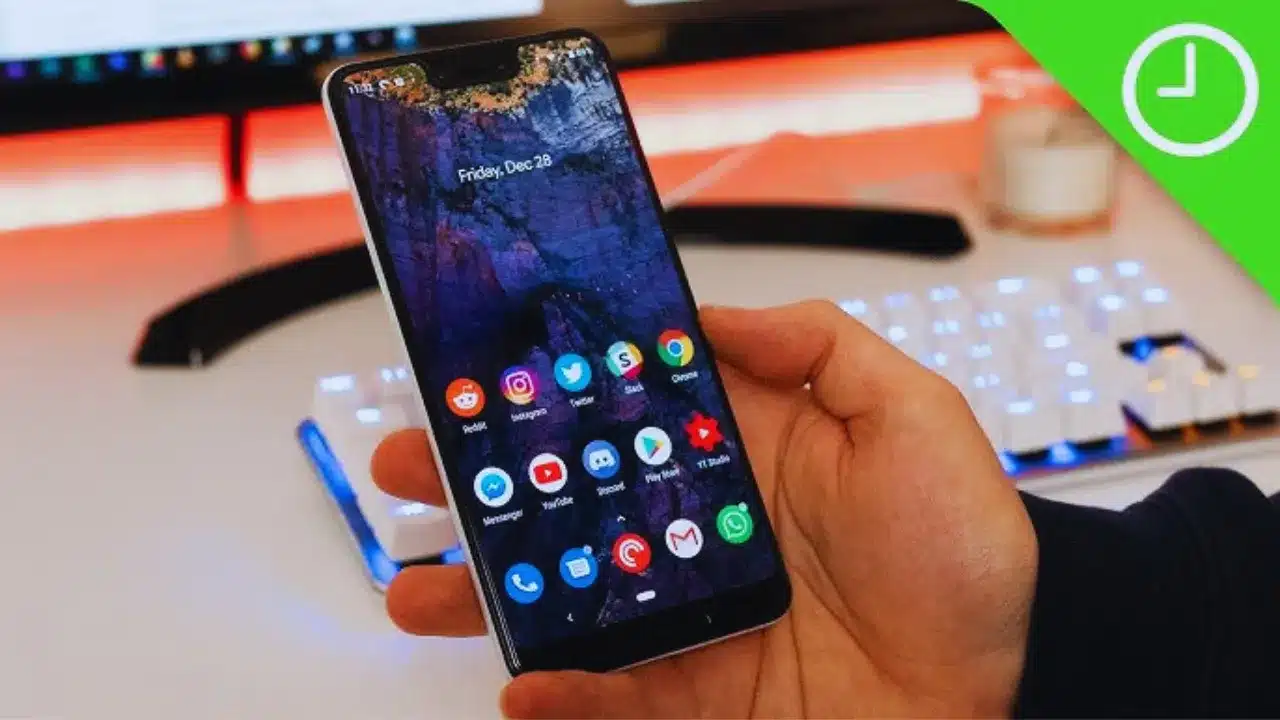Privacy has become a significant concern, especially with the increasing use of smartphones and tablets. Apps are a big part of how we interact with our devices, but not all apps are meant to be visible to everyone. Whether you’re trying to keep certain apps hidden from prying eyes or protect sensitive information, knowing how to hide apps can be a valuable skill. I will discuss exploring simple yet effective methods to hide apps on various devices, including Android and iOS, as well as some potential drawbacks and security risks associated with app hiding techniques.
Why Hiding Apps is Important
How to hide apps Many people want to hide apps for different reasons. Some might want to protect their privacy and sensitive data, while others simply want to declutter their home screen. Hiding apps also comes in handy when sharing a device with others. There could be personal or financial apps that you don’t want someone else to access, or you might want to keep your gaming apps hidden if someone is borrowing your phone.
Moreover, by hiding apps, you reduce the chances of accidentally opening sensitive content when handing over your phone. This gives you more control over your device and what others can see when they have access to it. Some may even want to hide apps to protect themselves from hackers or data miners who might try to access certain information through these applications.
Ways to Hide Apps on Android and iOS
Each of these methods offers different levels of security and convenience, but the idea is the same: prevent unwanted access to certain apps. Now that we understand why you may want to hide apps, let’s dive into how you can do it. There are different methods for hiding apps depending on whether you are using an Android or iOS device.
| Method | Android | iOS |
| Native Features | App Drawer / Hide via Settings | App Store Restrictions |
| App Locking | Third-party App Lockers | Guided Access, Screen Time |
| Third-party Apps | App Hiders, Nova Launcher, etc. | App Hider apps (like Secret Apps) |
| Creating Folders | Creating Folders and Placing Apps | Creating Folders and Placing Apps |
| Using a Guest Account | Setting up Guest Mode | Using Screen Time/Restrictions |
| Disabling Apps | Settings > Apps > Disable Apps | Settings > Screen Time > App Limits |
Native Features for Hiding Apps
How to hide apps Both Android and iOS devices offer native features that make it easy to hide or restrict access to certain apps, providing a straightforward way to enhance privacy. These built-in tools don’t require third-party apps, offering a simple and efficient solution for users. Whether it’s through app drawer settings or content restrictions, these methods help keep apps out of sight without compromising device performance. For users seeking a quick, no-fuss option, these native features are often the most convenient choice.
Android: Using the App Drawer and Settings
How to hide apps On most Android devices, the simplest way to hide apps is by removing them from the home screen and placing them into the app drawer.
- Remove apps from your home screen: Simply press and hold the app you want to hide, then drag it to the “Remove” option (this only removes it from the home screen, not the device entirely).
- Use the app drawer: Some Android devices (like Samsung) offer a “Hide apps” feature directly in the launcher settings.
Steps to Hide Apps on Android
- Open the app drawer.
- Select “Edit” or “Hide Apps.”
- Choose the apps you want to hide.
iOS: App Store Restrictions
How to hide apps iOS provides a unique approach to hiding apps by using the “Restrictions” feature or setting “App Limits” through Screen Time. Instead of directly hiding apps from the home screen, these tools allow users to control app visibility and restrict access to certain apps. This method helps maintain privacy while ensuring a personalized, secure experience on your device.
Steps to Hide Apps on iOS
- Open Settings and go to Screen Time.
- Enable Screen Time if it’s not already on, and set a Passcode.
- In Content & Privacy Restrictions, you can restrict app installations and deletions or even limit the visibility of specific apps.
App Locking Solutions for Added Security
How to hide apps If you need more protection for your apps, consider using third-party app lockers. These apps allow you to set up PINs, passwords, or even fingerprint security to lock specific apps. Many Android users rely on third-party app lockers like AppLock, while iOS users can take advantage of Guided Access or Screen Time.
For Android
- Norton App Lock: Another reliable option that provides similar functionality.
For iOS
- Guided Access: This built-in feature allows you to lock the device into a single app and prevents the user from navigating to other apps.
- Screen Time: As mentioned earlier, Screen Time also allows for restricting access to certain apps based on time usage.
Using Third-Party Apps for Hiding Apps
There are many third-party apps available for both Android. How to hide apps and iOS that claim to hide or lock apps effectively. Some of these apps include more advanced features like encryption and fake covers, which can deceive others into thinking that a hidden app is a different one altogether.
For Android
- Nova Launcher: This launcher allows you to hide apps in the app drawer, making them invisible to the user unless they know how to access them.
- App Hider: App Hider is another popular choice, offering features like hiding apps and creating fake apps to deceive others.
For iOS
- Private Vault: This app allows you to store sensitive files and apps in a hidden folder that is password-protected.
While these apps offer more customization and advanced features, the downside is that they often require additional storage space and sometimes may not be as secure as built-in solutions. Plus, they can potentially violate certain terms of service if used improperly.
Creating Folders for Organization
How to hide apps Another simple and effective way to hide apps is by creating folders. This method is especially useful if you want to group apps and make your home screen View more organized. By placing multiple apps into a folder, you reduce the number of apps visible on your home screen, which could deter people from browsing through your apps.
For Android: Rename the Folder if Desired and Add More Apps
How to hide apps On Android devices, organizing your apps into folders is a convenient way to manage your home screen and keep it neat. When you place multiple apps into a folder, it not only saves space but also helps in grouping similar apps, such as social media apps, games, or productivity tools. You can easily rename the folder to reflect its content, which further streamlines access.
- Open your home screen where the folder is located.
- Tap on the folder you want to rename.
- Once the folder opens, tap on the name at the top of the folder, which by default might be “Unnamed Folder.”
- Type a new name for the folder (e.g., “Social” or “Games”) and press OK or Done.
For iOS: Add More Apps to the Folder as Needed.
How to hide apps On iOS devices, creating folders is a simple yet effective way to organize your apps and declutter the home screen. By grouping apps, you can make it easier to find and access them. iOS provides an intuitive way to create folders and add apps to them, so your device remains well-organized.
- Tap and hold on any app icon until the icons begin to jiggle.
- If the app is already in a folder, the folder will open automatically.
- To add more apps, simply drag them into the open folder. iOS will allow you to place multiple apps inside a folder based on your preferences.
- You can also rename the folder by tapping on the folder’s name at the top and entering a new name.
Using a Guest Account or Profile
If you want to keep your apps hidden when lending your phone to someone else, setting up a guest account or profile can help. Both Android and iOS devices offer the ability to set up secondary user accounts or restrict access to certain features.
For Android
- Go to Settings > Users & Accounts.
- Select Add User or Add Guest.
- Configure the new account with limited access.
For iOS
- While iOS doesn’t have a full guest mode, you can use Guided Access to restrict the user to one app.
Using a guest account ensures that others cannot access your apps or data. However, this method only works if you’re willing to set up a separate profile or account for each user.
Disabling Apps
How to hide apps Sometimes, the best way to hide an app is to disable it completely. Both Android and iOS devices allow users to disable pre-installed apps, which removes them from the home screen and app drawer.
For Android
- Go to Settings > Apps.
- Select the app you want to disable.
- Tap Disable.
For iOS
Disabling apps prevents them from running and removes their icons from the home screen, which is a good way to hide apps you don’t use often. However, disabling apps can sometimes cause issues with functionality, especially with pre-installed apps.
The Risks of Hiding Apps
While hiding apps can be a great way to maintain privacy, it’s important to be aware of potential risks. Hiding apps doesn’t make your device immune to security threats, and there are a few downsides to consider:
- Security loopholes: Many third-party app hiders are not always 100% secure, which means there’s a possibility of someone bypassing the hidden apps.
- Accidental hiding: Sometimes, apps can get accidentally hidden, and you may forget where you placed them.
- Device performance: Using third-party apps to hide apps can sometimes impact your device’s performance.
Wrapping Up
Hiding apps can be a simple yet powerful tool to safeguard your privacy, especially in a world where our smartphones hold a wealth of personal information. Whether you use built-in features or third-party apps to conceal your apps, comprehending the different methods available allows you to choose the best solution for your needs. While hiding apps can help protect your privacy, it’s important to be aware of the potential risks associated with certain techniques, such as security vulnerabilities or accidental app removal.
Ultimately, taking control of your device’s visibility and knowing how to secure your apps can help you maintain a higher level of privacy and peace of mind. Make sure to choose the right method based on your preferences and ensure that your privacy remains intact in a digital world full of potential threats.
FAQs
What is the best method to hide apps on Android?
The best method depends on your needs. If you only want to make apps less visible, using the app drawer is simple and effective. However, if you need more security, third-party app lockers like AppLock offer added protection by allowing you to set passwords or PINs for specific apps. For a cleaner home screen, creating folders is a great option, while using a guest profile can help if you’re lending your phone to someone else.
Can I hide apps on iOS without using third-party apps?
iOS offers native features that allow you to hide apps without any third-party apps. You can place apps in folders to reduce their visibility or use the “App Store Restrictions” feature to hide apps from the App Store altogether.
Are app-hiding apps secure?
App-hiding apps can offer varying levels of security. While some apps, like AppLock or Private Vault, use encryption and password protection, others may have vulnerabilities that hackers could exploit. It’s important to choose reputable apps and ensure your device is updated regularly to minimize security risks.
Will hiding apps speed up my phone?
Hiding apps using native features like creating folders or moving apps to the app drawer will not affect your phone’s performance. However, using third-party app hiders or lockers might have a minor impact on performance because these apps often run in the background to provide security features. To ensure the best performance, consider using built-in methods instead of third-party apps.
Can I hide pre-installed apps on Android?
Many Android devices allow you to disable pre-installed apps, effectively hiding them from your home screen and app drawer. Disabling apps will stop them from running and prevent them from taking up space on your phone. However, some system apps cannot be disabled, and removing them may require advanced steps.
Is it safe to hide apps with app lockers on Android?
App lockers are generally safe, but they are not foolproof. Some app lockers might have vulnerabilities that hackers can exploit, so it’s important to choose reputable apps from trusted developers. Additionally, ensure that the app locker itself is password-protected to prevent unauthorized access to the locked apps.
How do I hide apps from my kids on my iPhone?
You can hide apps from your kids on your iPhone by using Screen Time to restrict app usage. Set up a passcode for Screen Time, and enable app limits or content restrictions to prevent your child from accessing certain apps. You can also move the apps to folders or even hide them from the App Store to make them less accessible.










